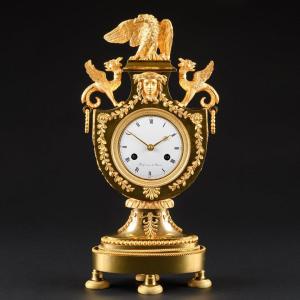See our website for more detailed photos: LINK
This superior and richly decorated gilt bronze French Empire clock signed Boicervoise has the shape of a coat of arms on a pedestal. It is surmounted by a winged eagle personifying Jupiter flanked by two griffins. Further, the case has applied decorations of a mascaron, foliage and flowers. Also, to the side of the case there are handles formed as pearl rings. The clock case rests on four legs with guilloche decoration.
In the center of the clock we see the clockwork, which carries the signature “Boicervoise à Paris”. Tardy lists Boicervoise as a clock maker who was active during the Empire period in the rue de la Harpe in Paris. The clockwork has a white enamel dial with Roman numerals for the hours and Arabic numerals for the minutes and finely pierced gilt bronze hands.
Details Of This Empire Clock
This unique Empire clock presents itself with it’s original mercury gilding in an excellent state of preservation. The movement with anchor escapement, silk thread suspension and outside count wheel strikes the hours and half hours on a bell. The clock is in an exceptional and perfectly working condition. Also, it has been cleaned and serviced by a professional clock maker. The clock comes complete with its pendulum, key and bell.
Paris, Empire period circa 1810.
Dimensions: height 42.5 cm, width 21 cm, depth 12.5 cm.
The Eagle: Symbol Of Empire
When Napoleon became Emperor of the French in May 1804, he wanted a symbol that would signal his legitimacy and distinguish his reign from the Bourbon monarchy of the ancien régime. A number of options were proposed at a meeting of the Council of State on June 12: eagle, lion, elephant, bee, oak. A committee appointed to consider the question recommended the rooster, which had been associated with France since the Middle Ages and had been revived during the French Revolution. Napoleon reportedly dismissed this idea, saying “the cock belongs to the farmyard! It is far too feeble a creature!”. He preferred the lion, however when it was time to sign the decision, Napoleon crossed out the word “lion” and replaced it with “eagle”.
The ancient Greeks and Romans associated the eagle with speed, strength and martial valour, as well as with their god of the sky (Zeus in Greek mythology, Jupiter in Roman mythology). The eagle was also a symbol of the Franks and Charlemagne, and had Christian connotations. It had long been associated with royal, imperial and divine rulers. Napoleon believed the eagle would give his new Empire the appearance of grandeur, power and longevity. He also admired the ancient Romans. The eagle was just one aspect of the classical Roman style that came to influence the Empire’s art, architecture and décor.
Mythology Of Griffins
The griffin is a beast with an eagle’s head and lion’s body. It is an imaginary mythical creature with the body, tail, and back legs of a lion. Further it had the head and wings of an eagle, and sometimes an eagle’s talons as its front feet. Because the lion was traditionally considered the king of the beasts, and the eagle the king of the birds, the griffin was thought to be an especially powerful and majestic creature. Since classical antiquity, griffins were known for guarding treasures and priceless possessions such as gold. In ancient art, the griffin symbol is often shown as the guardian of the gold. Griffins were believed to be sacred to the sun and also they were sacred to Apollo.
Literature
- Tardy, Dictionnaire des horlogers français, p.63
We send this article worldwide, professionally packaged, with registered and fully insured shipping at a fair price.




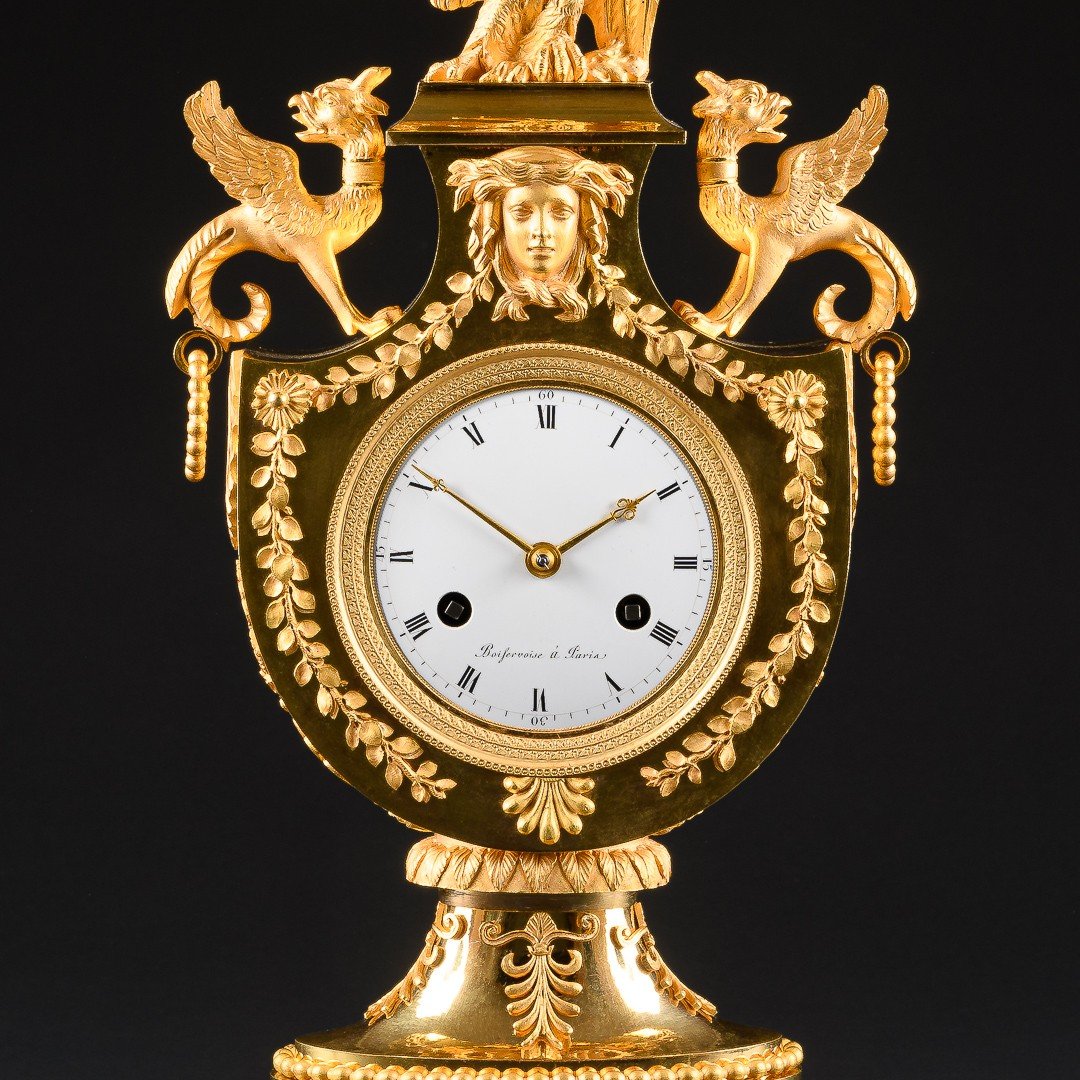
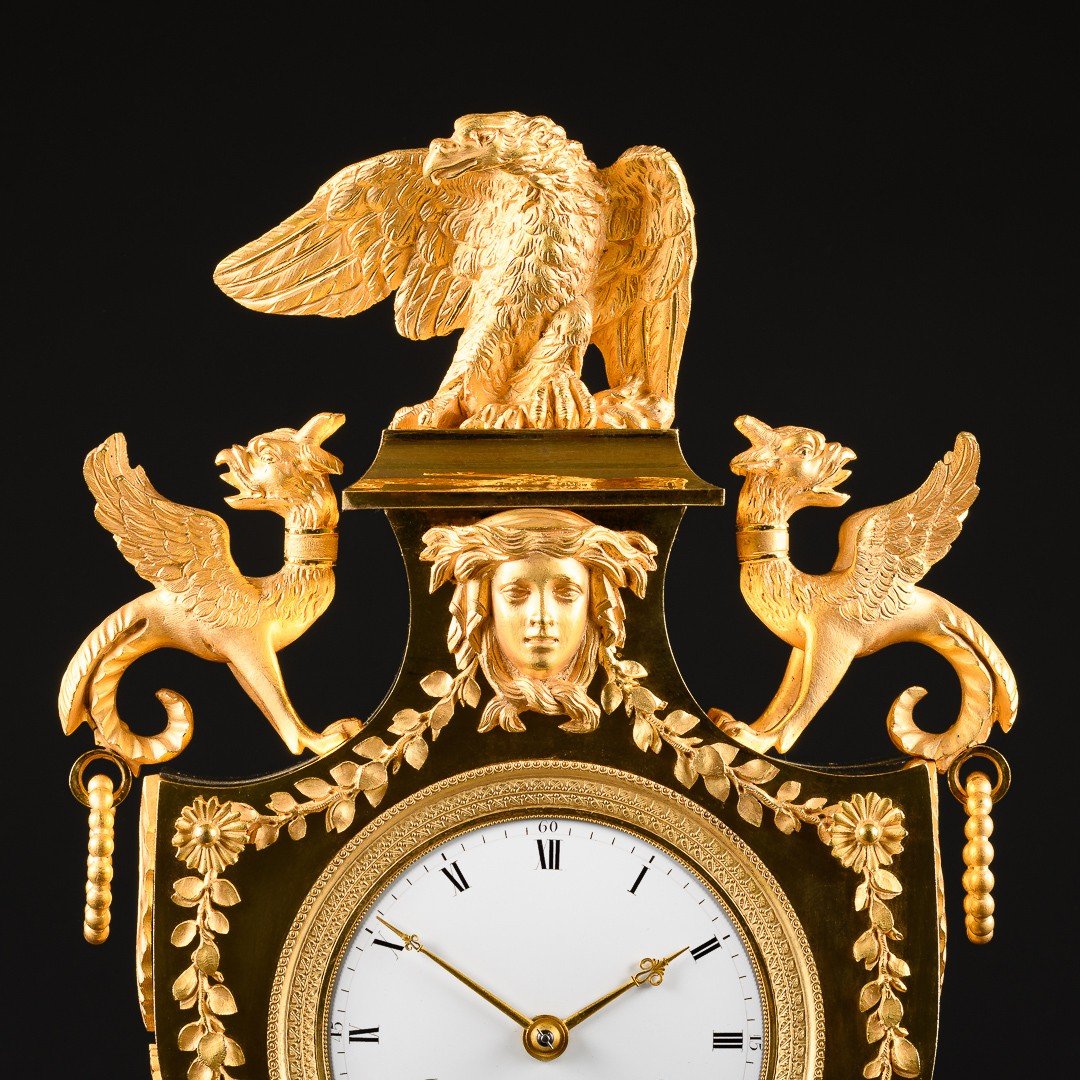

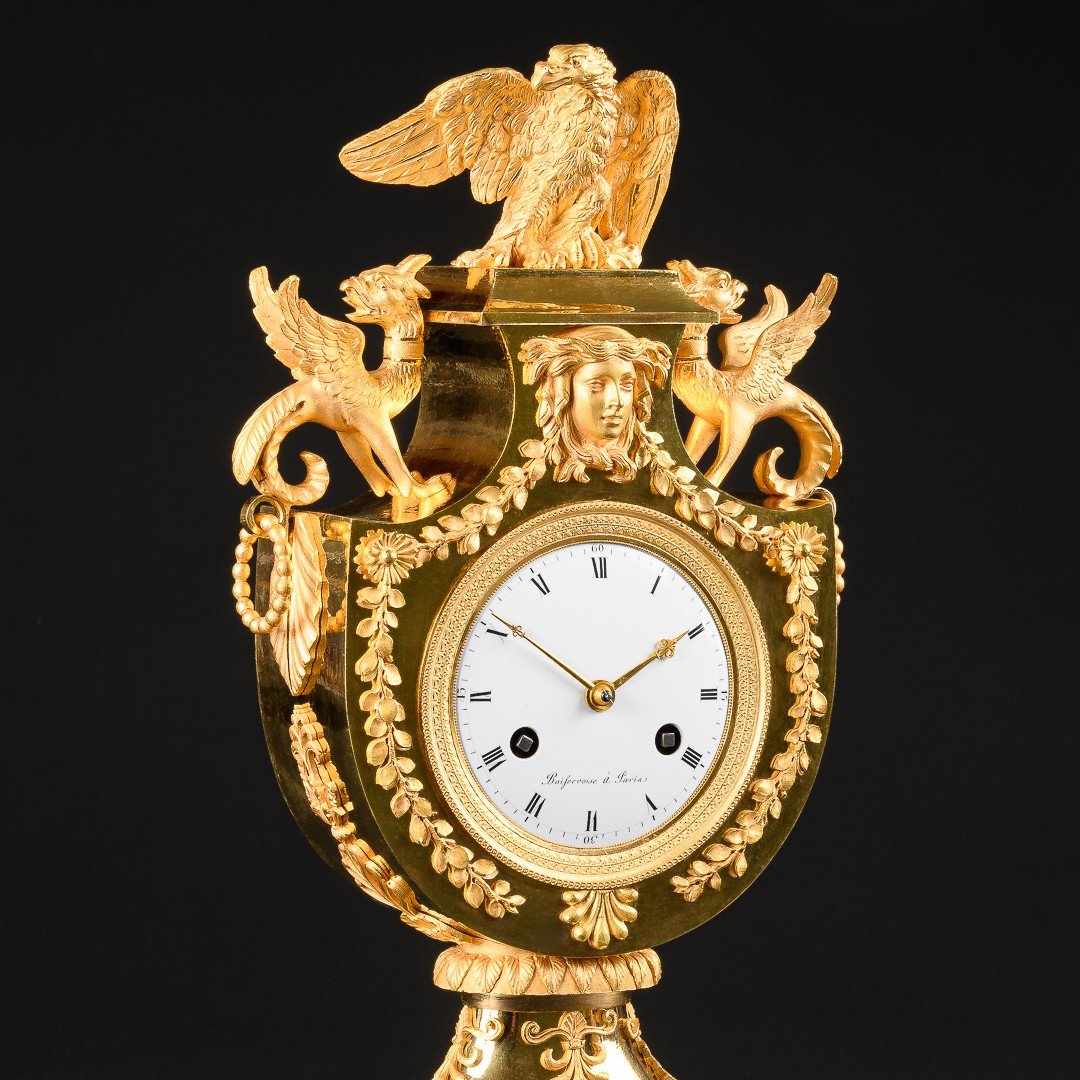
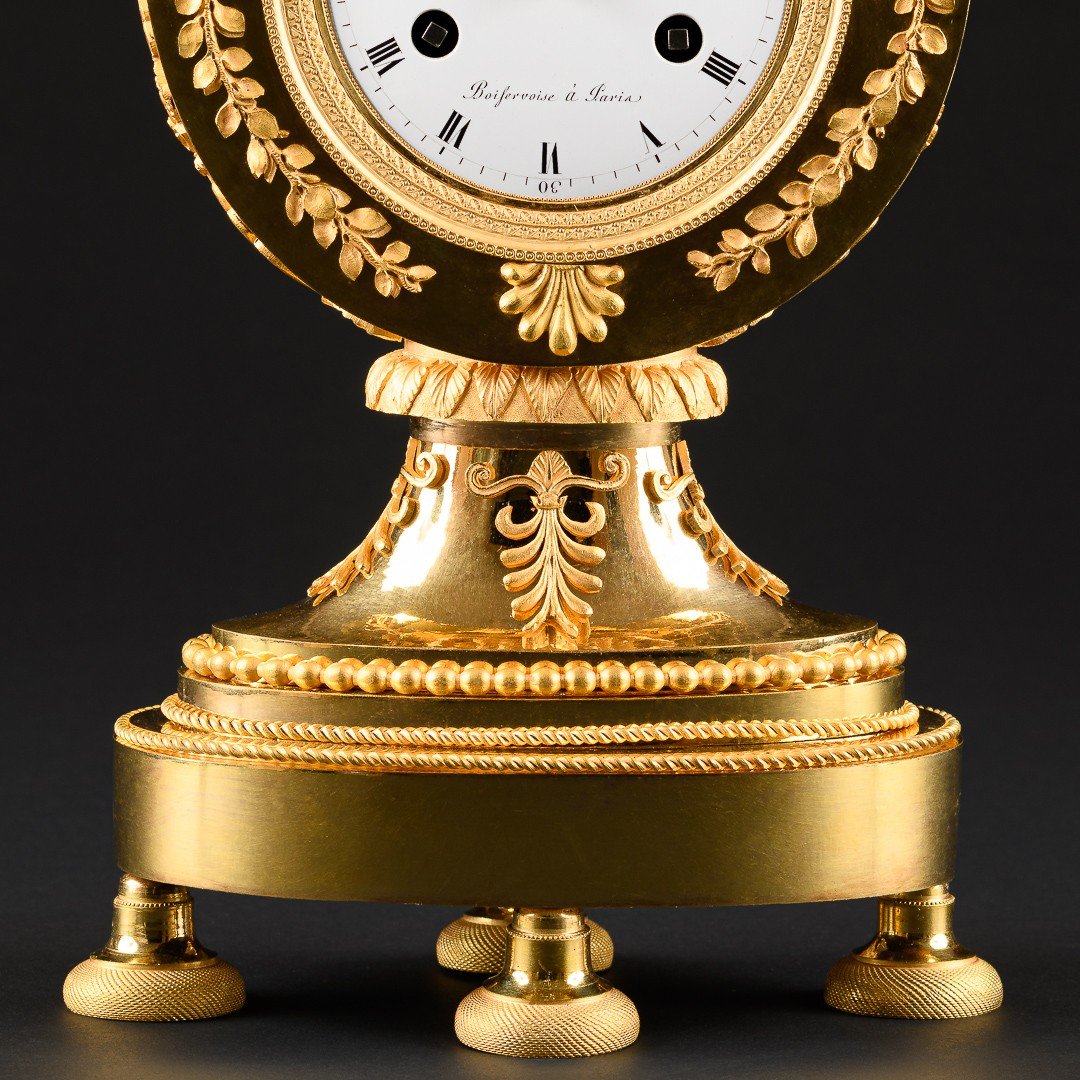
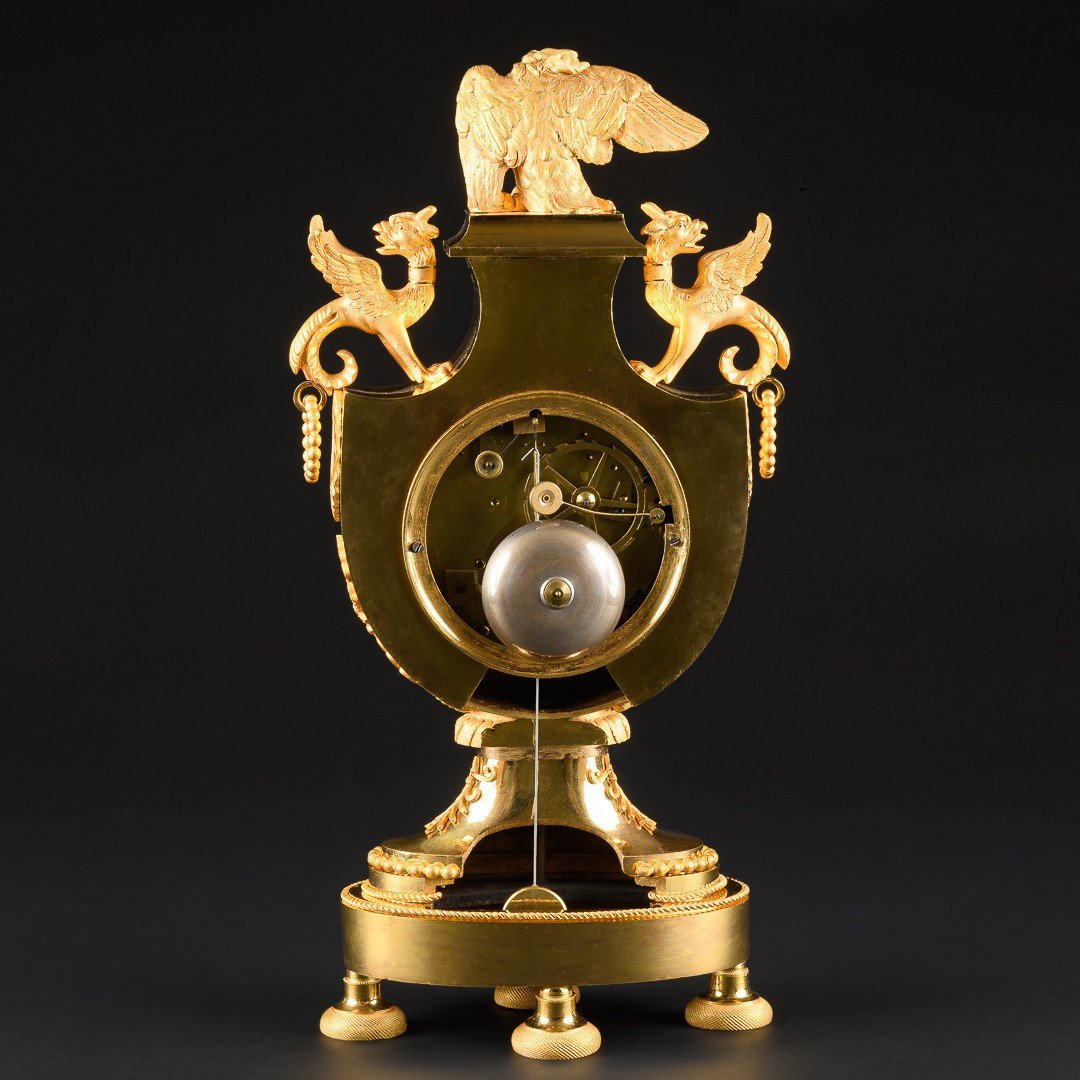




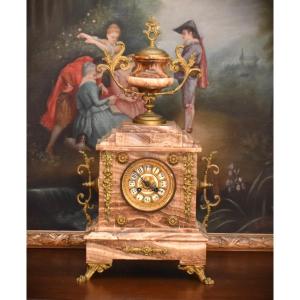

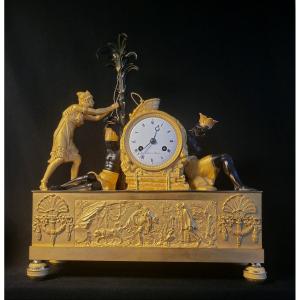




 Le Magazine de PROANTIC
Le Magazine de PROANTIC TRÉSORS Magazine
TRÉSORS Magazine Rivista Artiquariato
Rivista Artiquariato
